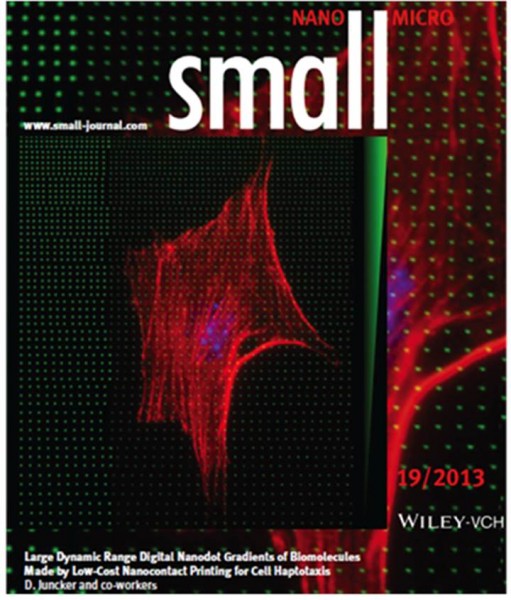+STRUCTURED +THROUGHPUT
The study of cell navigation in response to surface cues is called haptotaxis and dates back to 1967, but a conceptual framework and standards for comparing studies is lacking. As a consequence many conclusions reached in prior studies are misguided. The researcher developed a framework, introducing concepts such as ‘reference surface’, ‘cell-surface affinity’ as well as ‘cell-surface affinity binding curves’, which support standardization, that will allow quantitative comparison between studies, and provide a new angle to (re-)interpret past and future studies.
A novel low cost contact printing method was developed, allowing to make thousands of prints with patterns as is needed for cell navigation studies. Simultaneously, the team developed ‘digital nanodot gradient’, DNG, which increased the dynamic range of digital surface gradients by two orders of magnitude, matching the 3-4 orders of magnitude found in vivo. The method was used to produce an array of 100 DNGs including novel random and non-monotonic gradients with a total of 57 million dots that can be printed in 30 seconds. Thousands of prints were made and used to study the navigation of neurons. The results will help uncover new facets of neuronal navigation, and are used to calibrate stochastic models of cell navigation in collaboration with Dr. A. Faisal (Imperial College).
REFERENCES
[1] S. G. Ricoult, M. Pla-Roca, R. Safavieh, G. M. Lopez-Ayon, P. Grütter, T. E. Kennedy, and D. Juncker, Small, 9, 3308 – 3313 (2013).
RESEARCHERS
Prof. Junker, Prof. Grütter and Prof. Kennedy (McGill University)
IRDQ CONTRIBUTION
